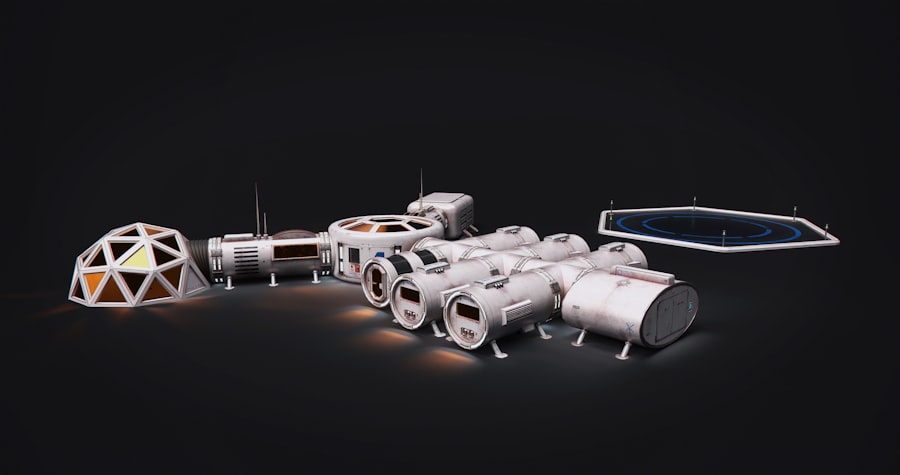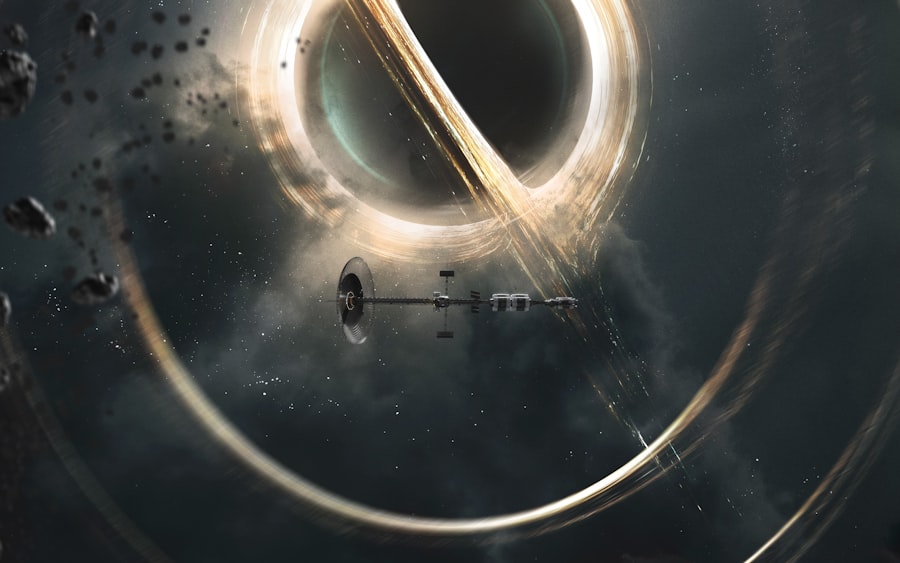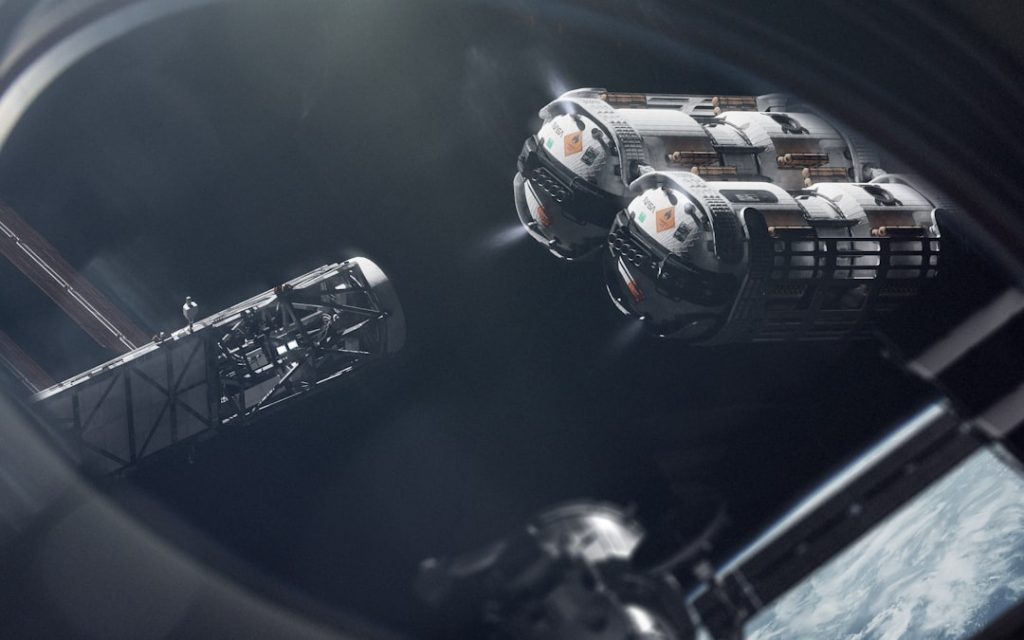The exploration of space has always been a frontier of human curiosity and ambition, driven by the desire to understand our universe and our place within it. With the advent of advanced spacecraft technology, we have entered a new era of discovery that has transformed our understanding of celestial bodies. Spacecraft, equipped with sophisticated instruments and sensors, have ventured beyond the confines of Earth, providing invaluable data about planets, moons, asteroids, and comets.
These missions have not only expanded our knowledge but have also raised profound questions about the origins of life and the potential for extraterrestrial existence. The significance of these discoveries cannot be overstated. Each mission contributes to a growing tapestry of knowledge that informs our understanding of planetary formation, geological processes, and the potential for life beyond Earth.
As we continue to develop and deploy more advanced spacecraft, the possibilities for new discoveries seem limitless. From the dusty plains of Mars to the icy moons of Jupiter and Saturn, each new finding adds a layer of complexity to our understanding of the solar system and beyond. The following sections will delve into some of the most exciting recent discoveries made by spacecraft, highlighting the remarkable achievements of human ingenuity in the quest for knowledge.
Key Takeaways
- Spacecraft have made new discoveries that have revolutionized our understanding of the universe.
- Mars rovers have uncovered evidence of past water and potential for life on the red planet.
- Probing the outer planets has revealed their unique atmospheres, moons, and magnetic fields.
- Exploration of Jupiter and Saturn’s moons has provided insights into potential habitability and geologic activity.
- Studying asteroids and comets has shed light on the early solar system and potential impact hazards.
The Latest Findings from Mars Rovers
Mars has long captivated scientists and enthusiasts alike, serving as a focal point for exploration due to its similarities to Earth and its potential to harbor life. The latest findings from Mars rovers, particularly NASA’s Perseverance and Curiosity rovers, have provided unprecedented insights into the planet’s geology and climate history. Perseverance, which landed on Mars in February 2021, is equipped with advanced scientific instruments designed to search for signs of ancient microbial life.
One of its most significant achievements has been the collection of rock samples from an ancient river delta, which are believed to contain organic materials that could provide clues about past life on Mars. Curiosity, which has been operational since 2012, continues to explore the Gale Crater and has made remarkable discoveries regarding the planet’s past habitability. Recent analyses of sedimentary rock layers have revealed evidence of ancient lakes and rivers, suggesting that Mars once had a much wetter climate conducive to life.
The rover’s findings indicate that these bodies of water were rich in minerals that could have supported microbial ecosystems. The data collected by both rovers are being meticulously analyzed on Earth, with scientists eager to understand the implications for astrobiology and the potential for future human exploration.
Probing the Mysteries of the Outer Planets

The outer planets—Jupiter, Saturn, Uranus, and Neptune—present a unique set of challenges and mysteries that have intrigued astronomers for decades. Spacecraft such as NASA’s Juno and the now-retired Cassini mission have provided groundbreaking insights into these gas giants. Juno, which has been orbiting Jupiter since 2016, has revealed astonishing details about the planet’s atmosphere, magnetic field, and internal structure.
One of its most striking discoveries is the presence of enormous cyclones at Jupiter’s poles, which challenge existing theories about atmospheric dynamics on gas giants. Cassini’s mission to Saturn was equally transformative. Launched in 1997 and operational until 2017, Cassini provided a wealth of data about Saturn’s rings and moons.
One of its most significant findings was the discovery of hydrothermal activity on Enceladus, one of Saturn’s moons. This activity suggests that there may be a subsurface ocean beneath its icy crust, raising intriguing possibilities about the moon’s potential to support life. The detailed imaging and spectrometry conducted by Cassini have also enhanced our understanding of Saturn’s complex ring system, revealing intricate structures and dynamics that continue to be studied by scientists.
Exploring the Moons of Jupiter and Saturn
| Moon | Planet | Diameter (km) | Surface Temperature (°C) |
|---|---|---|---|
| Io | Jupiter | 3,643.2 | -143 to 27 |
| Europa | Jupiter | 3,121.6 | -160 to -220 |
| Ganymede | Jupiter | 5,268.2 | -183 |
| Callisto | Jupiter | 4,821.6 | -139 |
| Titan | Saturn | 5,151.8 | -179 |
| Enceladus | Saturn | 504.2 | -198 |
| Mimas | Saturn | 396.4 | -186 |
The exploration of Jupiter’s and Saturn’s moons has opened new avenues for understanding planetary systems beyond our own. Europa, one of Jupiter’s largest moons, is particularly noteworthy due to its subsurface ocean beneath an icy shell. The Hubble Space Telescope has detected plumes of water vapor erupting from Europa’s surface, suggesting that this ocean may be in contact with the moon’s rocky mantle, creating conditions potentially suitable for life.
Future missions, such as NASA’s Europa Clipper, aim to further investigate this intriguing moon by conducting detailed reconnaissance of its ice shell and subsurface ocean. Similarly, Saturn’s moons have garnered significant attention from scientists. Titan, Saturn’s largest moon, is unique in that it possesses a dense atmosphere and liquid methane lakes on its surface.
The data collected by Cassini revealed complex organic chemistry occurring in Titan’s atmosphere, raising questions about prebiotic processes that could mirror those on early Earth. The upcoming Dragonfly mission will send a rotorcraft lander to Titan to explore its surface and atmosphere in greater detail, potentially uncovering clues about the moon’s habitability and its geological processes.
Uncovering the Secrets of Asteroids and Comets
Asteroids and comets are remnants from the early solar system that hold vital clues about its formation and evolution. Missions such as NASA’s OSIRIS-REx and Japan’s Hayabusa2 have successfully returned samples from asteroids Bennu and Ryugu, respectively. These missions aim to analyze the composition of these celestial bodies to better understand the building blocks of planets and the origins of organic materials that may have contributed to life on Earth.
OSIRIS-REx collected samples from Bennu in 2020 and is currently on its way back to Earth, with a planned return in 2023. Preliminary analyses suggest that Bennu contains a rich variety of organic compounds and minerals that could provide insights into the conditions present during the solar system’s formation. Similarly, Hayabusa2 returned samples from Ryugu in December 2020, revealing a complex mixture of carbon-rich materials that may shed light on the processes that led to the emergence of life on Earth.
Comets also play a crucial role in our understanding of solar system history. The European Space Agency’s Rosetta mission provided unprecedented data on comet 67P/Churyumov-Gerasimenko, revealing its composition and structure. The mission demonstrated that comets are not just icy bodies but complex entities with diverse materials that could have delivered water and organic compounds to early Earth.
These findings underscore the importance of studying asteroids and comets as we seek to unravel the mysteries surrounding the origins of life.
Investigating the Origins of the Solar System

Understanding the origins of our solar system is one of the most profound questions in planetary science. The study of meteorites—remnants from the early solar system—has provided critical insights into its formation processes. By analyzing isotopic compositions in these ancient rocks, scientists can reconstruct the conditions present during the solar system’s infancy.
For instance, studies have shown that certain meteorites contain presolar grains—tiny particles formed before our solar system existed—offering a glimpse into the processes occurring in other stellar environments. Additionally, missions like NASA’s New Horizons have expanded our understanding beyond traditional boundaries by exploring distant objects in the Kuiper Belt. The flyby of Pluto in 2015 revealed a complex world with diverse geological features and an atmosphere that challenges previous assumptions about icy bodies at such distances from the Sun.
The data collected from Pluto and its moons continue to inform theories about planetary formation and migration within our solar system. The study of exoplanets—planets orbiting stars outside our solar system—has also revolutionized our understanding of planetary systems’ diversity and evolution. Observations from missions like Kepler and TESS (Transiting Exoplanet Survey Satellite) have identified thousands of exoplanets, some located within their star’s habitable zone where conditions might be right for life as we know it.
These discoveries prompt scientists to consider how different environments can lead to varied planetary characteristics and potentially different forms of life.
Advancements in Spacecraft Technology
The rapid advancements in spacecraft technology have been pivotal in enhancing our exploration capabilities. Innovations such as improved propulsion systems, miniaturized scientific instruments, and autonomous navigation systems have allowed missions to reach farther destinations with greater efficiency. For example, ion propulsion technology has enabled spacecraft like Dawn to travel vast distances within our solar system while consuming significantly less fuel than traditional chemical propulsion methods.
Moreover, advancements in communication technology have improved data transmission rates between spacecraft and Earth-based facilities. This enhancement allows for more detailed scientific data collection during missions while reducing delays in receiving critical information from distant worlds. The development of high-resolution cameras and spectrometers has also revolutionized our ability to capture detailed images and analyze materials on other planets and moons.
The integration of artificial intelligence (AI) into spacecraft operations is another groundbreaking advancement. AI algorithms can process vast amounts of data onboard spacecraft in real-time, enabling autonomous decision-making during critical mission phases such as landing or navigating through hazardous environments. This capability is particularly important for future missions targeting remote or challenging destinations where human intervention may not be feasible.
Future Missions and Potential Discoveries
Looking ahead, numerous ambitious missions are planned that promise to expand our understanding of the universe significantly. NASA’s Artemis program aims to return humans to the Moon by 2024 as part of a broader strategy to establish a sustainable presence there by 2028. This initiative will serve as a stepping stone for future crewed missions to Mars while providing opportunities for scientific research on lunar geology and potential resources.
In addition to lunar exploration, missions targeting Mars are also on the horizon. The Mars Sample Return mission aims to bring back samples collected by Perseverance for detailed analysis on Earth. This endeavor will provide critical insights into Mars’ past habitability and potentially answer questions about whether life ever existed there.
Furthermore, missions targeting astrobiologically interesting locations such as Europa and Enceladus are being planned for future exploration. The Europa Clipper mission will conduct detailed reconnaissance of Europa’s ice shell and subsurface ocean while assessing its habitability potential. Similarly, NASA’s Dragonfly mission will explore Titan’s surface using a rotorcraft lander capable of flying between various locations to study its unique chemistry.
As we continue to push the boundaries of exploration through innovative spacecraft technology and ambitious missions, we stand on the brink of potentially groundbreaking discoveries that could reshape our understanding of life in the universe and our place within it. Each new mission not only builds upon previous knowledge but also inspires future generations to look toward the stars with wonder and curiosity.


